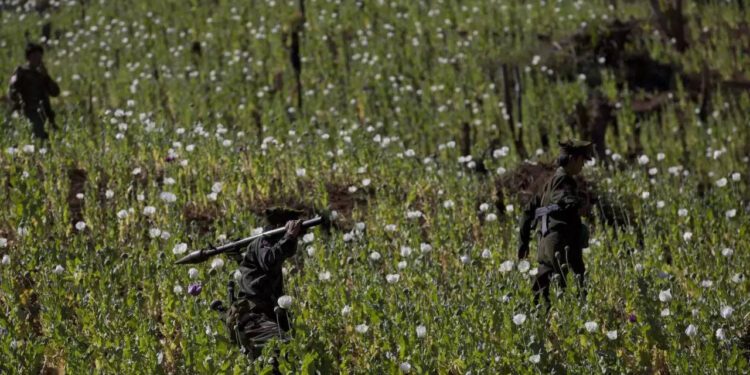In a significant shift, Myanmar has overtaken Afghanistan to claim the title of the world’s largest opium producer, according to the latest United Nations Office for Drugs and Crime (UNODC) report. Myanmar’s opium production for 2023 reached an estimated 1,080 metric tonnes, while Afghanistan experienced a drastic 95% decline to about 330 tonnes after the Taliban government implemented a ban on poppy cultivation last year.
The notorious “Golden Triangle” region, spanning Myanmar, Laos, and Thailand, has long been associated with illegal drug production and trafficking, including methamphetamine and opium. The UNODC report indicates that Myanmar’s “opiate economy” is valued between $1 billion and $2.4 billion, constituting 1.7% to 4.1% of the country’s 2022 GDP.
Myanmar’s legal economy, grappling with conflict and instability since the military seized power in 2021, has led many farmers to turn to poppy cultivation. Factors such as poor market access, deficient state infrastructure, and rampant inflation have contributed to farmers’ decisions to cultivate more poppy in recent times.
The UNODC report highlights the increasing sophistication of poppy cultivation in Myanmar, with improved practices, enhanced irrigation, and potential fertilizer use boosting crop yields. Shan state, particularly its northern region, has been the primary cultivating area and has witnessed heightened conflict in recent weeks as ethnic minority armed groups launched an offensive against the junta and its allies.
While Afghanistan, historically the world’s leading opium producer, saw cultivation collapse after the Taliban’s pledge to end illegal drug production, Myanmar’s rise underscores the complexity of tackling drug-related issues amid political instability and conflict. The UNODC report suggests that cultivation has also surged in northern Kachin state and Chin state on the border with India.
The challenges in curbing the multi-billion dollar drug trade persist in Myanmar, with analysts expressing skepticism about the military’s commitment to eradicating it. The latest developments underscore the ongoing struggle to address drug production and trafficking in regions marked by conflict and political unrest.
















